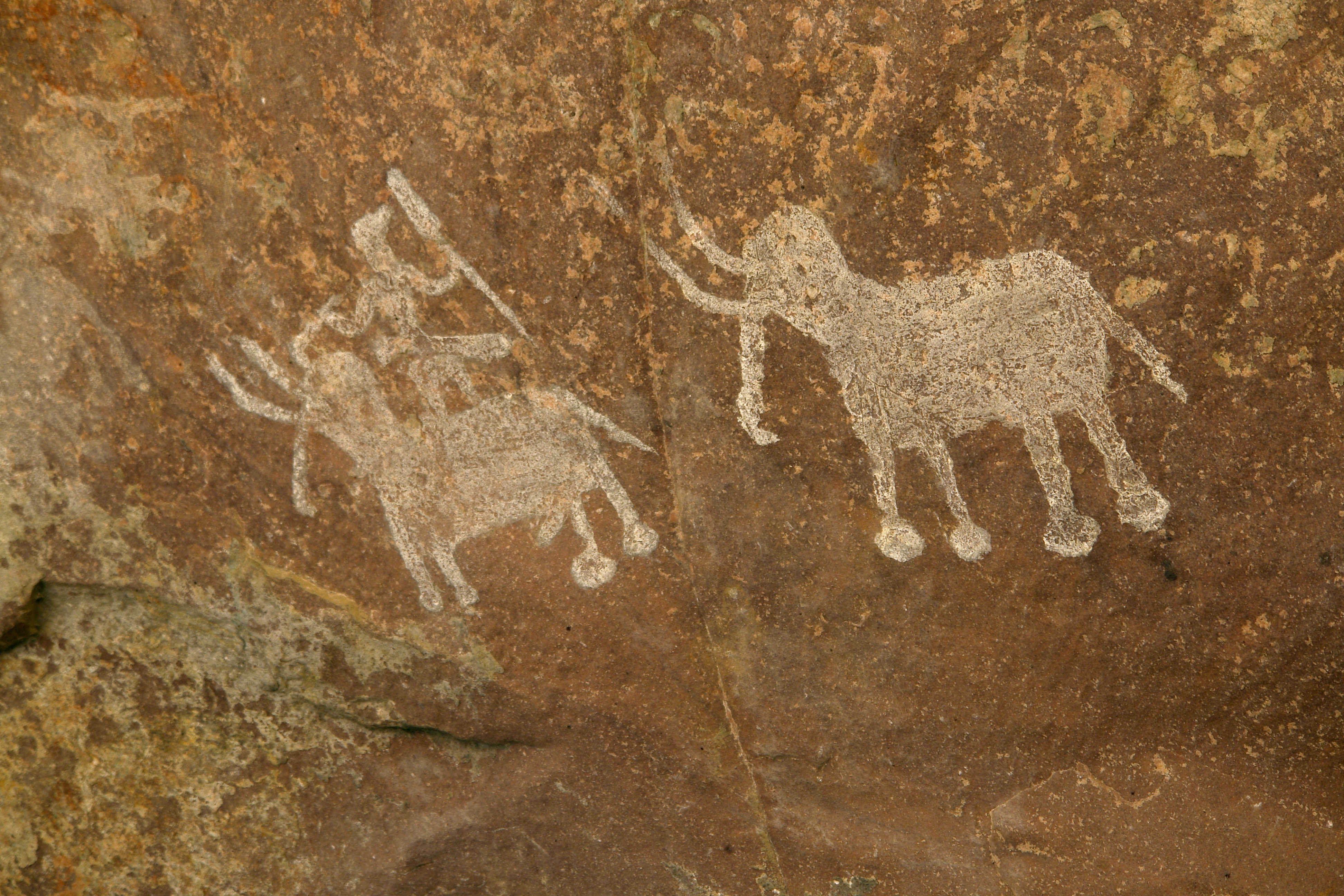A boulder at the Auditorium Cave, Bhimbetka, Madhya Pradesh, India (c.290,000-700,000 BCE). The world's Oldest Art. Bhimbetka Petroglyphs (290,000-700,000 BCE. A man being hunted by a beast, Bhimbetka Cave paintings. Originally posted to Flickr as भीमबैटिका/Bhimbetka Cave Paintings. Download as PDF.
Description 1 of the rock shelter caves at Bhimbetka, Madhya Pradesh.jpg Bhimbetka rock shelters and caves are a UNESCO world heritage site consisting of over 750 caves and shelters over 10 kilometers and 7 hills. The archaeological site dates between 100,000 to 1,700 CE, with cave paintings that are estimated to about 30,000 years ago. The site is about 45 kilometers south of Bhopal, Madhya Pradesh. Date 3 December 2016, 11:42 Source Author from Pune, India Licensing [ ] This file is licensed under the license. You are free: • to share – to copy, distribute and transmit the work • to remix – to adapt the work Under the following conditions: • attribution – You must attribute the work in the manner specified by the author or licensor (but not in any way that suggests that they endorse you or your use of the work).
• share alike – If you alter, transform, or build upon this work, you may distribute the resulting work only under the same or similar license to this one. CC BY-SA 2.0 Creative Commons Attribution-Share Alike 2.0 true true This image was originally posted to by solarisgirl. It was reviewed on 30 December 2017 by and was confirmed to be licensed under the terms of the cc-by-sa-2.0. 30 December 2017 File history.
This file contains additional information such as Exif metadata which may have been added by the digital camera, scanner, or software program used to create or digitize it. If the file has been modified from its original state, some details such as the timestamp may not fully reflect those of the original file. The timestamp is only as accurate as the clock in the camera, and it may be completely wrong.
Cupule and meander petroglyph on a boulder at the Auditorium Cave, Bhimbetka, Madhya Pradesh, India (c.290,000-700,000 BCE). Bhimbetka Petroglyphs (290,000-700,000 BCE) Cupules at Auditorium Cave & Daraki-Chattan Rock Shelter The oldest known is the series of discovered during the 1990s in two ancient quartzite caves in India: the Auditorium Cave at Bhimbetka and a rock shelter at Daraki-Chattan.
This consists of numerous - non-utilitarian hemispherical cup-shaped depressions - hammered out of the rock surface. Geological investigations of the prehistoric sites by renowned archeologists Bednarik, Kumar and others, have established that this pre-dates the Acheulean culture of the Lower Paleolithic era, and must therefore date from at least 290,000 BCE. However, once more advanced dating methods become available, it is conceivable that these petroglyphs will turn out to be much older - perhaps originating as early as 700,000 BCE - although at present this is mere speculation. Even so, the Bhimbetka cupules are four times older than the, which is the next oldest site of.
Rock Art from Bhimbetka - 7000 BCE Created over 250,000 years after the first petroglyphs and cupules were produced at the Auditorium Cave. OLDEST PREHISTORIC CARVING For details of the earliest figurative sculpture of the Stone Age, see:. PREHISTORIC ART in IRELAND For details of arts & culture during the Pleistocene and Holocene epochs, see: Mainly megalithic architecture. What are Petroglyphs?


- A Definition The term 'petroglyph' stems from two Greek words ('petros' meaning rock, and 'glyphein' meaning to carve) and means simply 'rock carving.' Location The two prehistoric caves where the world's was found, are located in the Madhya Pradesh region of central India. Thus at present it seems that the is considerably older than, hitherto assumed to comprise the earliest artistic tradition. The quartzite rock formations at Bhimbetka number over 700 rock shelters, over 500 with cave murals and other forms of paleoart. Archeological excavations began back in the early 1970s and nearly a dozen shelters were investigated.

 0 kommentar(er)
0 kommentar(er)
